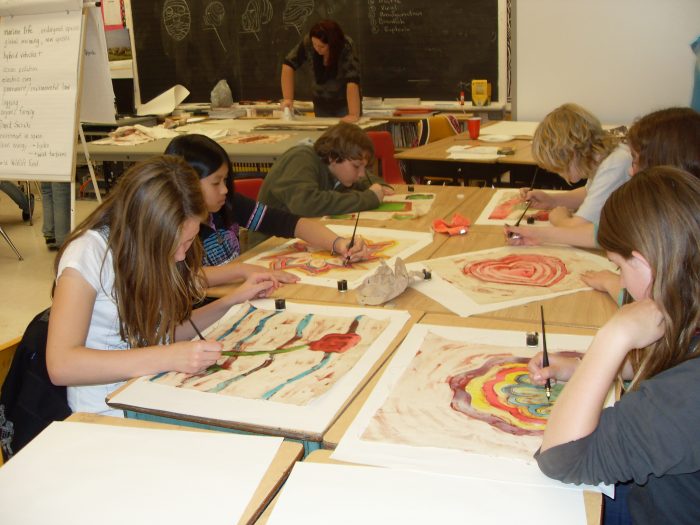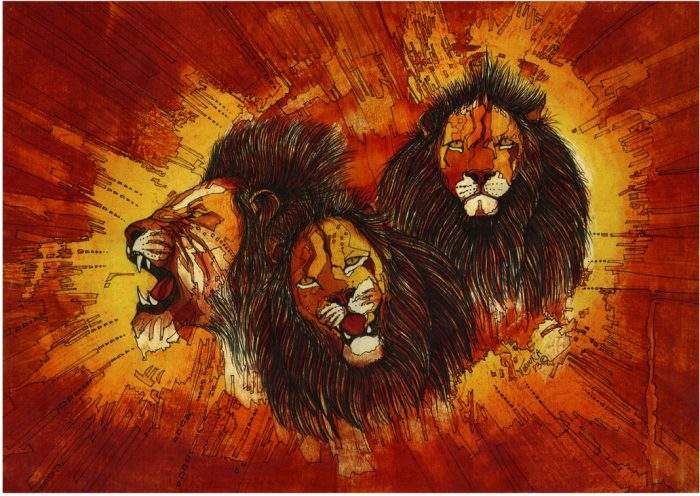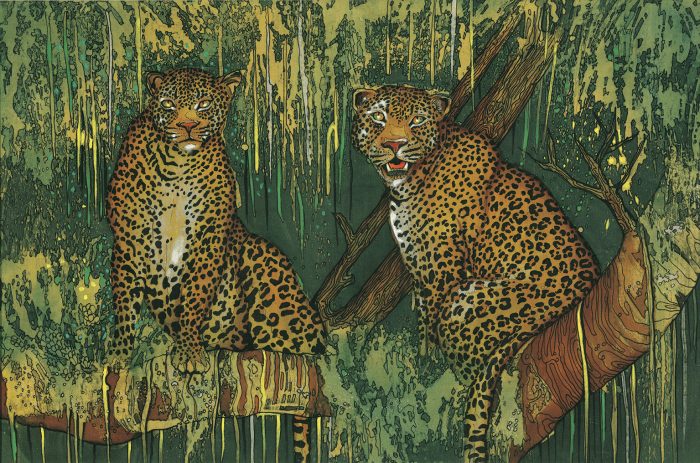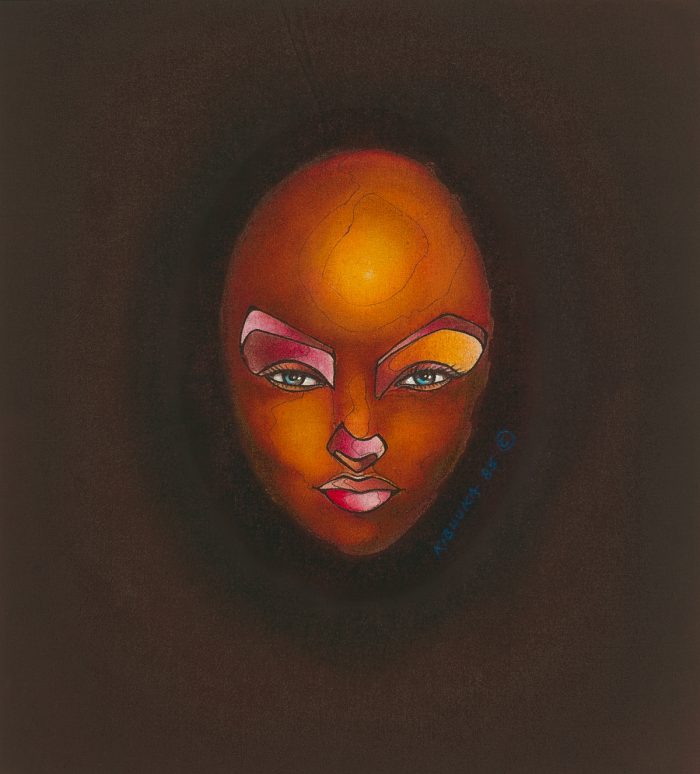New Batik & The Fruits of Modernism
Writer: Jeannie Cotter
Image Courtesy: David Kibuuka


Fast forward to year 3015. Imagine being in a time-capsule and transported into a new city – you see batik monuments erected on the streets, nicely done and almost resembling art sculptures. Artists begin to speak of wax in abstract language. Instead of wax being used as a dye-resistant agent on a piece of fabric, it can be seen as borders that join different continents of the world. The rain seems like wax applied on batik fabric and a great leap has been made. Welcome to seeing things in 11th-Dimension.
A sort of telepathy occurs between David Kibuuka and his viewers. Being one of the originators of Fragmentation in Batik, Kibuuka believes that genetically, we are all artists. It is only that some of us strongly express the ability to create objects.
Born in Uganda (East Africa), David Kibuuka left Uganda in 1977 for Nairobi, Kenya, to continue his studies in fine art. Encouraged by his parents and late brother Henry Lumu to take the path of art, Kibuuka loves art as it gives him unlimited freedom of expression and is therapeutic to his soul. His late brother Henry Lutalo Lumu had a great influence on him.
Traditional batik technique came from Java, Indonesia to East Africa in the 60’s. A number of Ugandan artists left Uganda during the height of Idi Amin’s regime to sell and work in Nairobi, Kenya in 1976. The late Henry Lumu Lutalo revolutionized the traditional batik technique to match his realistic painting in watercolours and oils. Kibuuka, being a student of realistic pencil drawing, was able to learn the technique of Modern Batik from his older brother. Kibuuka added a number of components like pure toning, reversed half-tones and fragmentation. This dramatically altered the technique from the traditionally cracked background.
Through the guidance of his brother, Kibuuka was greatly influenced by the western masters like Rembrandt, Da Vinci, Michelangelo and Gauguin. He began painting at an early age and sold his first painting when he was 11 years old. He enjoys working in oils, acrylics, watercolours and modern batik. A number of his paintings depict ethnic subjects, wild life and nature.
To Kibuuka, the human civilization was incubated in art – without it, we wouldn’t have a blue print of where to go and what to invent. Art is being repackaged in high technology and the future trends in art will be on flat screens and cyber galleries. But original art will always be king to collectors.
Some of his latest paintings focus on spiritual life. Paintings like Thorns and Life Force and Pain, Power, Glory depict such spiritual energy. The whole idea is to transport the viewer into the spiritual world or to motivate them to think about it.
Inspired by life to paint, Kibuuka also believes humans live in a space of time called life, and in his timeline he would like to leave something behind when he’s gone. That motivates him to keep on painting and to assist others who are not as fortunate on this good earth. Apart from painting, Kibuuka is also involved in fundraising activities with a number of organisations for humanitarian purposes. He loves movies, especially science fiction movies.
He discovered batik through his high school teacher in 1974. Amazed by how wax and dyes in fabric produced different results, Kibuuka came up with a technique called the fragmentation technique and began using the technique in modern batik. Fragmentation can be manipulated to create all kinds of abstract patterns and designs in the background, that eventually become part of the subject matter in, for example, compositions like Mother and Child, Togetherness and many more. This unique style remains a characteristic of East African Modernism.
Most of his clients could not separate his modern batik art technique from some of his acrylic or watercolour paintings, so he wanted them to see the difference between the other media. Hence, the birth of a book on batik. His latest book “Modern Batik Workshops” has 50 colour plates that go back as far as 1981 to 2007.
Painting aside, Kibuuka organises modern batik workshops that are held all over Canada, the U.S. and the Caribbean. They are intended to motivate, inspire and empower youth who are artistic. He has a good number of adult and senior students who love the workshops for their therapeutic energy in the process of applying wax and dyes on fabric.
His advice to young artists: “Stay positive and focused. Innovation should always be the word; use the Internet to social network in the global village.”
Readers can view David Kibuuka’s artworks at www.modernbatikartworkshops.com.




